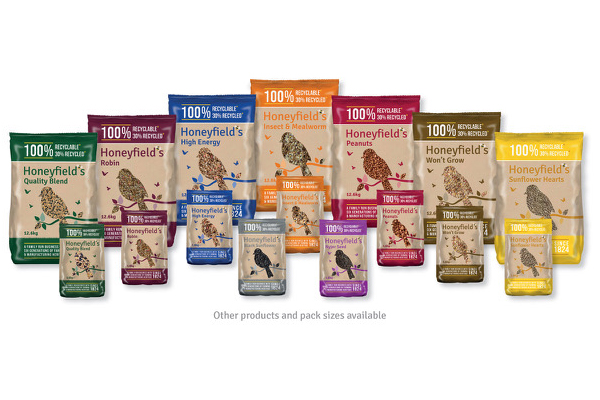Zest 4 Leisure, a leading trade supplier of quality timber garden products including decorative furniture, arches, arbours, fencing, sheds and summerhouses… Read more
Honeyfield’s provides best practice tips for wild bird feeding
Honeyfield’s is helping retailers deliver best practice advice to their wild bird-loving customers by providing eight top tips, from their resident wild bird expert Simon Smethurst, who is head of sales at Honeyfield’s.
“We hope the tips will help retailers engage with their customers about best practice choices for wild bird feeding at this time of year,” said Simon. “It should be a triple win: good for the customer, good for the birds and good for sales within the category.”
- Wild birds face cold temperatures, habitat loss, and reduced food availability during the winter. Good quality supplementary feeding helps bridge these gaps by providing energy-rich food sources.
- Supplementary feeding can help encourage greater biodiversity in urban and suburban areas, allowing us to observe a wide range of species in our gardens.

- During winter, high-fat options provide essential energy to help birds combat the cold.
- Regular cleaning of feeders and feeding stations is one of the most effective ways to prevent disease among wild birds. Feeders should be cleaned at least once every two weeks, and more frequently during periods of heavy use or wet weather, which can lead to mould growth.
- Feeding stations should be maintained by removing leftover food and droppings. Ground-feeding areas should be cleared of debris to prevent the build up of harmful bacteria.
- Rotate feeding locations and provide fresh, high-quality food, only filling feeders with food that can be consumed in a day. Both of which can further help reduce contamination.
- Choose feeders designed to minimise spillage and contamination such as tube feeders with drainage holes. Those with removable feeding ports, perches and accessories are easier to clean.
- Place feeders in sheltered locations away from predators and keeping them at a safe distance from windows will enhance bird safety.
“By supplementing natural diets responsibly and prioritising feeder cleanliness, we can support wild bird populations while minimising the risks associated with feeding.” said Simon.
Honeyfield’s offers an exceptional range of wild bird feeds designed to support wildlife throughout the changing seasons. From high-energy sunflower hearts and nutritious seed mixes to suet treats and mealworms, there’s a feed for every species and dietary requirement. The range is competitively priced for consumers to be able to feed the best, while retailers can benefit from good margin structures and introductory stocking incentives.
To find out more about the Honeyfield’s range visit: www.honeyfieldswildbird.co.uk
- Log in to post comments

